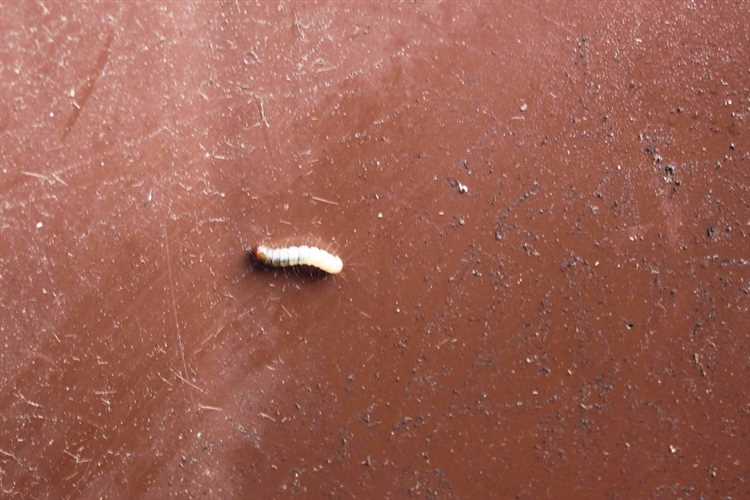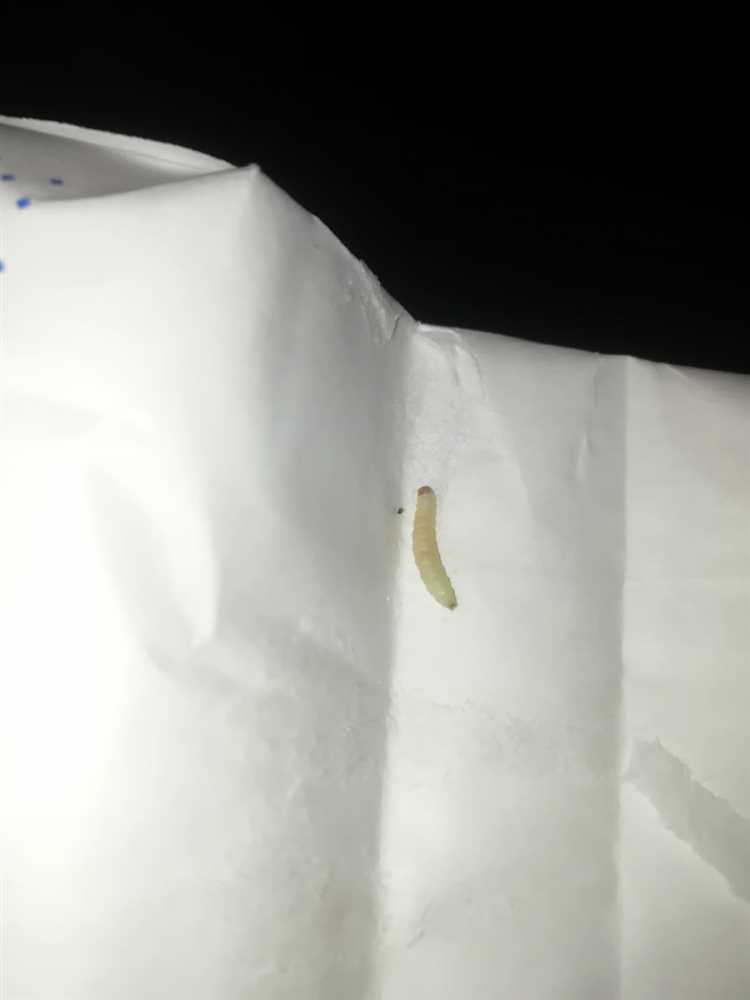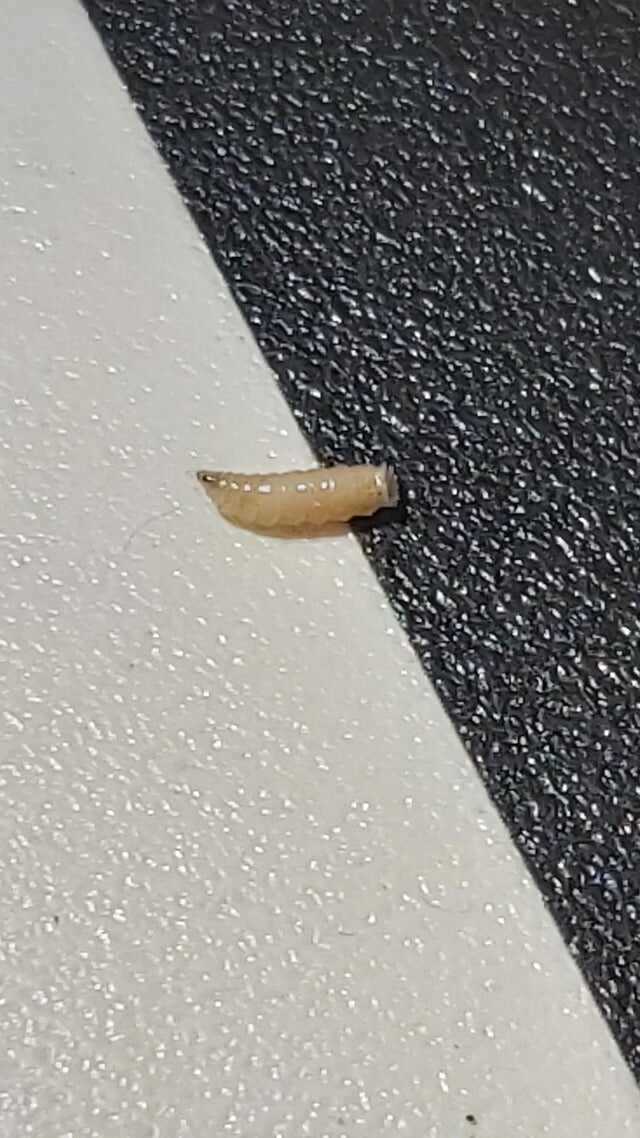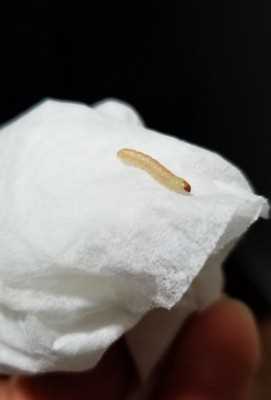Discovering little white worms in your kitchen can be a disturbing experience. These tiny creatures, known as pantry moth larvae or mealworms, can infest your pantry and contaminate your food. It is not only unsightly and unappetizing, but it can also lead to potential health risks if consumed.
So, what causes these little white worms to appear in your kitchen?
One of the main reasons for their presence is poor food storage practices. Pantry moth larvae are usually brought into the kitchen through infested food products, such as grains, flour, cereals, and spices. These pests can lay their eggs in improperly sealed containers or in products that have been stored for a long time. Once the eggs hatch, the larvae start feeding on the food and can quickly multiply, spreading throughout your kitchen.
But don’t panic! There are several solutions to get rid of these little white worms and prevent them from reappearing in your kitchen.
- Causes and Solutions: Little White Worms in Your Kitchen
- Causes
- Solutions
- Possible Causes: How Do They Get there?
- Identifying the Worms: What Do They Look Like?
- Health Risks: Can They Harm You?
- Preventive Measures: Keeping the Worms Away
- Q&A:
- What are the little white worms in my kitchen?
- How do pantry moth larvae get into my kitchen?
- Are pantry moth larvae harmful?
- How can I get rid of pantry moth larvae in my kitchen?
- How can I prevent pantry moth larvae from infesting my kitchen?
- What are the little white worms that I find in my kitchen?
- How do I prevent pantry moth larvae and grain weevils in my kitchen?
Causes and Solutions: Little White Worms in Your Kitchen

Discovering little white worms in your kitchen can be an unpleasant surprise. These worms, also known as pantry moths or grain beetles, can infest your food and cause contamination. Fortunately, there are several common causes for these pests in the kitchen and effective solutions to get rid of them.
Causes

1. Poor food storage: The most common cause of having little white worms in your kitchen is improper food storage. Leaving food packages open or unsealed can provide easy access for pantry moths and grain beetles to lay their eggs.
2. Infested grocery items: Another common cause is bringing home grocery items that are already infested with the eggs or larvae of pantry moths or grain beetles. These pests can quickly multiply and spread to other food items in your kitchen.
3. Neglected cleanliness: Neglecting to clean your kitchen regularly can attract these pests. Crumbs, spills, and food particles left behind can serve as an inviting food source for pantry moths and grain beetles.
Solutions
1. Secure food storage: To prevent infestations, store your food properly in airtight containers or sealed bags. This will help to keep pantry moths and grain beetles from accessing your food and laying eggs.
2. Inspect grocery items: Before bringing grocery items into your kitchen, inspect them closely for any signs of infestation. Look for small holes, webbing, or larvae. If you find any contaminated items, dispose of them immediately to prevent spreading the infestation.
3. Regular cleaning: Keep your kitchen clean and free from crumbs and spills by regularly wiping down countertops, sweeping the floor, and emptying the trash. This will help to eliminate any potential food sources for pantry moths and grain beetles.
4. Freezing infested items: If you discover pantry moths or grain beetles in your food, place the infested items in the freezer for a few days. This will kill the eggs and larvae and stop the infestation from spreading.
5. Professional help: If the infestation persists despite your efforts, consider seeking professional pest control services. They can identify the source of the problem and provide effective treatments to eliminate the pests from your kitchen.
By understanding the causes and implementing these solutions, you can effectively get rid of little white worms in your kitchen and prevent future infestations. Maintaining proper food storage and cleanliness will go a long way in keeping your kitchen pest-free.
Possible Causes: How Do They Get there?

There are several possible causes for the presence of little white worms in your kitchen. It is important to identify the source in order to effectively address the issue. Here are some common ways these worms can find their way into your kitchen:
| 1. Contaminated Food | The most common cause of little white worms in the kitchen is contaminated food. These worms can enter your kitchen through spoiled fruits, vegetables, grains, or other food items. They may have been present at the time of purchase or developed over time due to improper storage. |
| 2. Improperly Sealed Containers | If your food containers are not properly sealed, it can provide an entry point for these worms. They can easily crawl into containers and infest your pantry or kitchen cabinets. |
| 3. Unsanitary Conditions | If your kitchen is not kept clean and sanitary, it can attract pests, including little white worms. Food residues, spills, and crumbs can serve as a food source for these worms, encouraging their presence in your kitchen. |
| 4. Infested Packaging | Sometimes, the worms may already be present in the packaging of the food items you bring into your kitchen. They can easily spread from one package to another, leading to an infestation in your pantry. |
By understanding these possible causes, you can take necessary measures to prevent little white worms from infesting your kitchen. Regularly inspect and clean your food items, ensure containers are properly sealed, maintain a clean kitchen environment, and be cautious with the packaging you bring into your home.
Identifying the Worms: What Do They Look Like?

When faced with little white worms in your kitchen, it’s important to be able to identify them accurately. Here’s a description of what these worms typically look like:
1. Size: The worms are usually small, measuring about 1/4 inch in length. However, they can also vary in size depending on the species.
2. Color: The worms are white in color, hence their common name “little white worms”. However, they may appear transparent or slightly yellowish as well.
3. Shape: These worms are thin and elongated, resembling tiny threads or strings. They have a cylindrical body with no legs or visible body segments.
4. Movement: While the worms may look harmless and inactive, they can actually move quite quickly. They are capable of wriggling and squirming, especially when disturbed or when they are trying to find food or a suitable environment.
5. Characteristics: Some species of these worms may have additional features, such as bristles or hairs on their body, while others may have tiny head capsules or mouthparts.
It’s worth noting that without proper identification, it can be difficult to determine the exact species of these worms. Therefore, if you notice these little white worms in your kitchen, it’s advisable to consult a professional pest control expert for accurate identification and appropriate treatment measures.
Health Risks: Can They Harm You?
Having little white worms in your kitchen can be alarming, but the good news is that they typically do not pose a major health risk. These worms, most commonly known as pantry moths or Indian meal moths, are more of a nuisance than a danger to your health.
However, it’s important to note that the presence of pantry moth larvae in your food indicates that there may be other hygiene issues in your kitchen. The larvae feed on cereals, grains, flour, and other pantry staples, and their presence may indicate that these items have been infested or stored improperly.
If you accidentally consume pantry moth larvae, it is unlikely to cause any harm or illness. The larvae are not known to carry or transmit any diseases to humans. However, some people may experience gastrointestinal discomfort or an allergic reaction if they have a sensitivity to insects.
It is important to take immediate action when you discover pantry moths or their larvae in your kitchen. Dispose of infested food items, thoroughly clean your pantry and storage areas, and inspect other food items for signs of infestation.
To prevent future infestations and minimize health risks, it is important to practice good hygiene in the kitchen. Keep your pantry and kitchen clean and organized, store food in airtight containers, regularly inspect and rotate food items, and ensure proper sanitation practices.
If you have recurring pantry moth infestations or are concerned about the health risks associated with these pests, it may be helpful to consult with a professional pest control service to address the issue and prevent future problems.
Preventive Measures: Keeping the Worms Away

To prevent little white worms from invading your kitchen, it is important to take some preventive measures. By following these simple steps, you can keep your kitchen clean and free from these unwanted pests:
|
1. Regularly clean and organize your kitchen: Clean your kitchen thoroughly on a regular basis, paying special attention to areas where food particles may accumulate, such as countertops, sinks, and cabinets. Keep all surfaces and utensils clean to discourage worm infestations. |
|
2. Store food properly: Make sure to store food in airtight containers to prevent worms from accessing them. Avoid leaving food out in the open, and keep the pantry and fridge well-organized to avoid attracting pests. |
|
3. Dispose of trash correctly: Dispose of your kitchen trash regularly and properly. Use sealed trash cans and empty them frequently to prevent worms from breeding and infesting the area. |
|
4. Keep your kitchen dry: Worms and other pests thrive in moist environments. To discourage their presence, keep your kitchen dry by fixing any leaks, wiping up spills immediately, and using dehumidifiers if necessary. |
|
5. Inspect and seal entry points: Regularly inspect your kitchen for any openings or gaps where worms can enter. Seal these entry points with caulk or weatherstripping to prevent infestations. |
|
6. Regularly check and clean drains: Worms can sometimes thrive in drains. Regularly check and clean your kitchen drains to remove any buildup or debris that could attract worms. |
|
7. Seek professional help if needed: If you have tried all preventive measures and still have a recurring problem with little white worms in your kitchen, it may be time to seek professional pest control services to eliminate the infestation. |
By following these preventive measures, you can create a hygienic and worm-free environment in your kitchen. Don’t let these little white worms spoil your meals; take action and keep them away!
Q&A:
What are the little white worms in my kitchen?
The little white worms in your kitchen could be pantry moth larvae, also known as Indian meal moths. They are common pests that infest stored food products.
How do pantry moth larvae get into my kitchen?
Pantry moth larvae can enter your kitchen through infested food items that you bring home. These larvae are usually found in flour, cereal, grains, pet food, and other pantry staples.
Are pantry moth larvae harmful?
Pantry moth larvae are not harmful to humans, but they can contaminate your food with their webs and waste, making it unfit for consumption.
How can I get rid of pantry moth larvae in my kitchen?
To get rid of pantry moth larvae, you should throw away any infested food items, clean your pantry thoroughly, and store new food in airtight containers. You can also use traps or natural repellents to control the infestation.
How can I prevent pantry moth larvae from infesting my kitchen?
To prevent pantry moth larvae infestation, you should regularly clean your pantry, check food items for signs of infestation before buying them, and store food in air-tight containers. Additionally, you can freeze susceptible food items for a few days before storing to kill any potential larvae.
What are the little white worms that I find in my kitchen?
The little white worms that you find in your kitchen are likely to be pantry moth larvae or grain weevils. Both of these pests are common in stored food products. Pantry moth larvae are small, white worms with a brown head that feed on a variety of dry goods, such as flour, rice, cereal, and spices. Grain weevils are small insects that infest grains, such as rice, wheat, and oats. These pests can quickly multiply and cause damage to your stored food.
How do I prevent pantry moth larvae and grain weevils in my kitchen?
To prevent pantry moth larvae and grain weevils in your kitchen, there are several steps you can take. First, make sure to store all dry goods in airtight containers to prevent these pests from accessing your food. Additionally, regularly clean your kitchen and pantry area to remove any spilled food or crumbs that may attract them. You can also freeze infested items for a few days to kill any eggs or larvae. If you continue to have a problem, you may need to dispose of any heavily infested items and thoroughly clean your pantry.